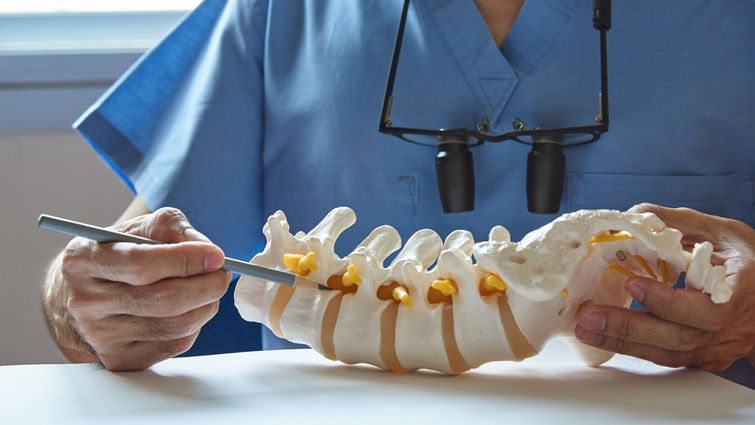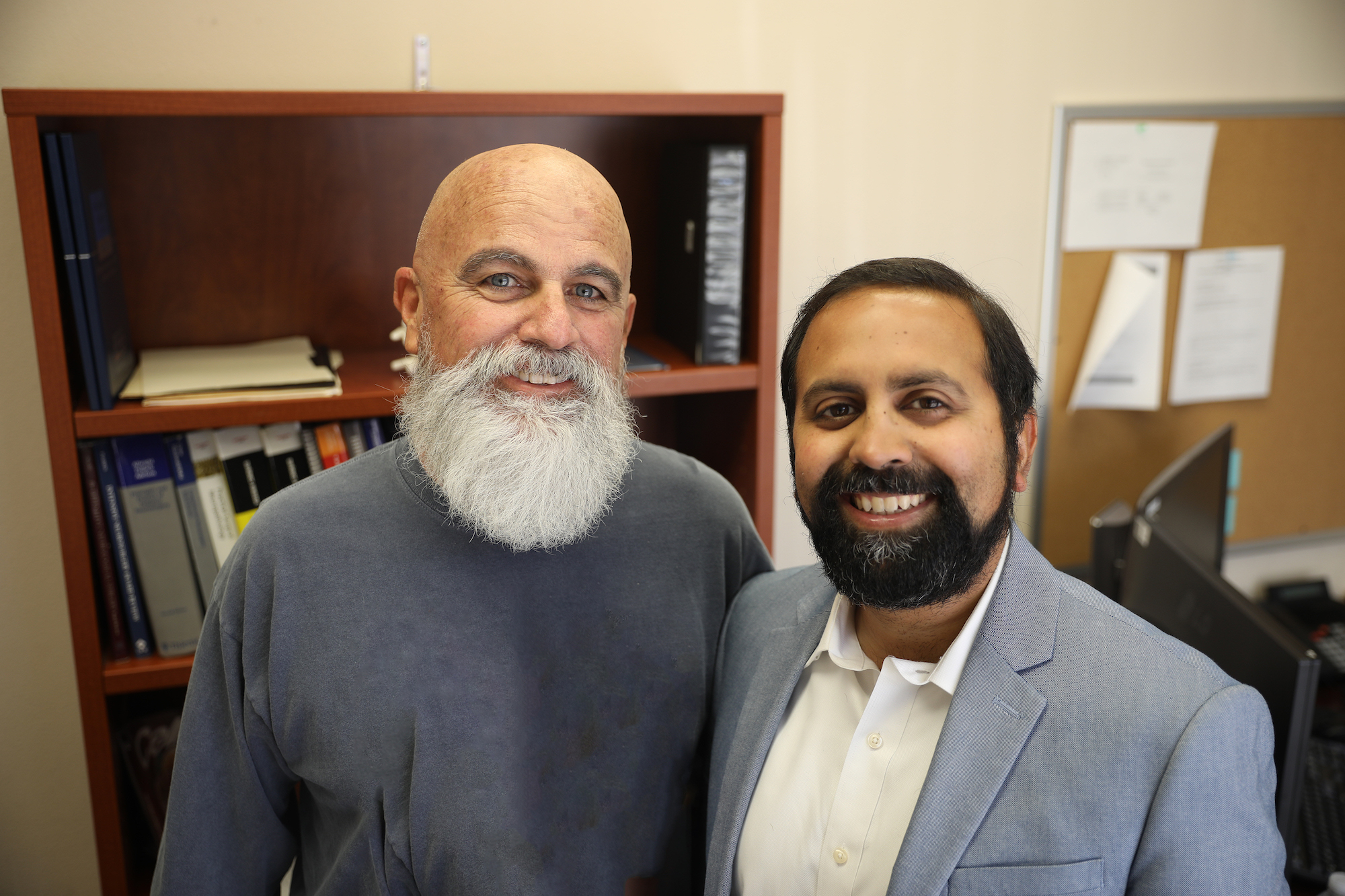
A new, innovative and minimally invasive procedure called Spinal Tumor Ablation with Radiofrequency was successfully performed last month at Loma Linda University Health, the first such procedure in the Inland Empire.
The procedure involves making small incisions in the back at each bone level to insert a probe directly into the tumor. The probe emits heat generated by the radiofrequency to kill the tumor cells. Once the tumor has been ablated, surgeons then stabilize the weakened bone by performing kyphoplasty — a procedure in which the surgeon uses a balloon-like device to inject cement into the spine. Spinal Tumor Ablation can be performed in as little as a few hours and allows patients to return to activities more quickly than traditional surgeries.
“This is a great minimally invasive therapy for patients with metastatic disease or primary tumor of bone because it provides patients another option for better quality of life and control of their tumor disease without exposing them to the risk of traditional surgeries,” said Namath Hussain, MD, a neurosurgeon who performed the procedure.

Hussain said traditional surgeries to remove a spinal tumor often involve opening the chest (thoracotomy), removal of some ribs and cutting the bone that was affected (corpectomy). Surgeons would then stabilize the bone with metal rods, plates, pins, screws or wires. These surgeries typically left patients in the hospital for long periods of time and required rehabilitation, making the recovery time longer.
“Our parameters for success are dependent on an individual’s ability to walk and participate in their daily activities. Being bed-ridden dramatically decreases those chances,” Hussain said. “Our goal is to ensure that people are staying active. A procedure like spinal tumor ablation helps individuals return to normal activity quicker, increases success and decreases morbidity.”
Hussain performed the procedure on patient Dave Romero, who had developed a spinal tumor as a result of Stage 4 lung cancer.
Romero’s journey to Loma Linda University Health began in April when first visiting his primary care physician for a persistent cough. A lung biopsy determined Romero had Stage 4 lung cancer, and he soon found himself at Loma Linda University Cancer Center under the care of oncologist Hamid R. Mishahidi, MD. After sharing his pain symptoms with Mirshahidi, Romero was introduced to Hussain for surgery.
“Prior to my surgery, it was quite difficult and painful to walk.” Romero says, “When walking, I experienced shooting pains down my pelvis and could feel the pain from the tumor pressing against my spine.” Romero added he wasn’t too worried about the surgery. “I had a lot of confidence in Dr. Hussain. I was able to leave the following afternoon and the pain was gone,” Romero said.
The American Association of Neurological Surgeons estimates that at least 30% of cancer patients will experience spread of cancer to their spine, also called bone metastases or metastatic tumor. Two immediate problems can occur when these develop, Hussain said. First, the bones weaken under the force of holding normal weight, causing patients to experience bone pain, broken bones, fractures and lesions. In some cases, they may develop kyphosis or a curvature of the back, becoming unable to stand straight. Secondly, the tumor can weaken the nerves causing numbness or paralysis in the arms and legs over time.
Spinal Tumor Ablation is now being offered at Loma Linda University Health. To learn more about our comprehensive spine care, including minimally invasive and open spine procedures, visit online or call 909-558-6388.
It’s never too late if you are concerned about a cough or your chances of developing lung cancer. Check out the Cancer Center screening options online or call 1-800-782-2623.
